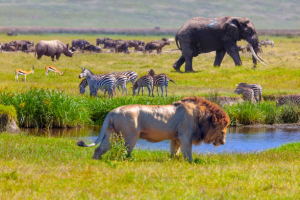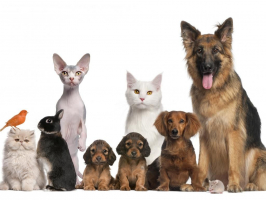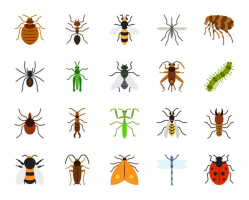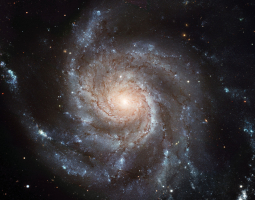Top 15 Questions About Birds Answered
There are thousands of bird species on the earth, and they may be found on every continent. The animals live in a variety of habitats since many birds move ... read more...from one habitat to the next when the seasons change. They frequently travel to warmer climates where they may gather food and procreate. One thing that all birds have in common is that they use nests to secure themselves from predators or to raise their young. Birds, the only creatures on the world with feathers, enchant humans with their mating rituals. There are also numerous unknowns around this species. Let's discover now.
-
Birds fly by raising and lowering their wings. The upstroke generates lift, while the downstroke generates thrust. When a bird flaps its wings, it moves them up and down alternately. The wing angle changes throughout the upstroke and downstroke. The wing is pointed upwards during the upstroke. Lift is created by channeling air downwards. The wing is pointed downwards during the downstroke. This generates propulsion by forcing air backwards. Scientists and engineers are currently researching the precise physics of how birds fly.
We do know, however, that birds utilize different flying strategies based on the sort of flight they are conducting. Gliding and soaring, for example, need different strategies than flapping flight. However, it is apparent that birds utilize their wings to generate both lift and push in order to remain aloft.
A bird's wing is a complex instrument that can be changed in a variety of ways to regulate speed, angle, height, and direction. The wing's broader base (the section closest to the bird's body) provides stability, while the wing's tip drives the bird forward. The form and structure of a bird's wing, particularly its shape and structure, impacts how the bird flies. Some soar at great heights, while others keep close to the earth. Others flap their wings gently yet fiercely while flying swiftly with tiny, rapid wing motions.
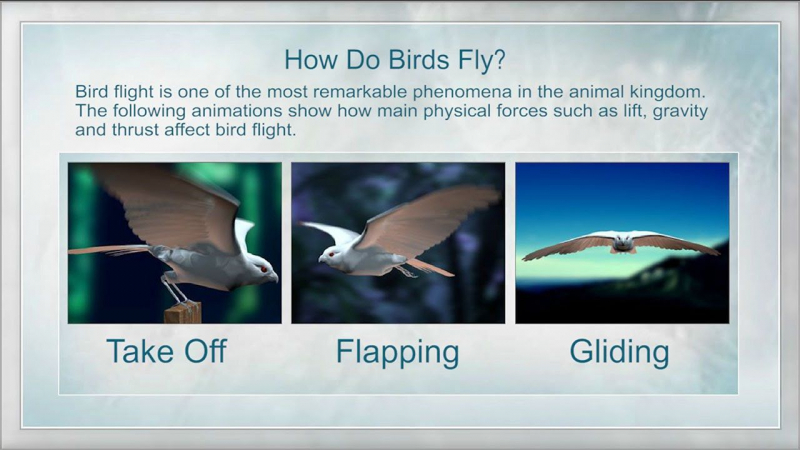
pinterest https://www.youtube.com/watch?v=cgO07y9JIIE -
The majority of birds fly. They can only fly for brief periods of time when molting (naturally shed their old feathers for new ones). Several birds, however, do not fly, including the African ostrich, the South American rhea, and the Australian emu, kiwi, and cassowary. The Southern Hemisphere penguins are likewise incapable of flying. They have feathers and insulation for breeding, but they move in a different way: their sleek bodies glide across the ocean thanks to their flipper-like wings. All of these flightless birds have wings, but they have lost the capacity to fly through millions of years of evolution, despite the fact that they are likely descended from flying birds.
These species' ability to fly may have been lost due to the slow deterioration of their wings. Perhaps they were isolated on oceanic islands where there were no predators, thus they had no need to fly to avoid danger. Another hypothesis is that food became abundant, removing the need to travel large distances in pursuit of it.
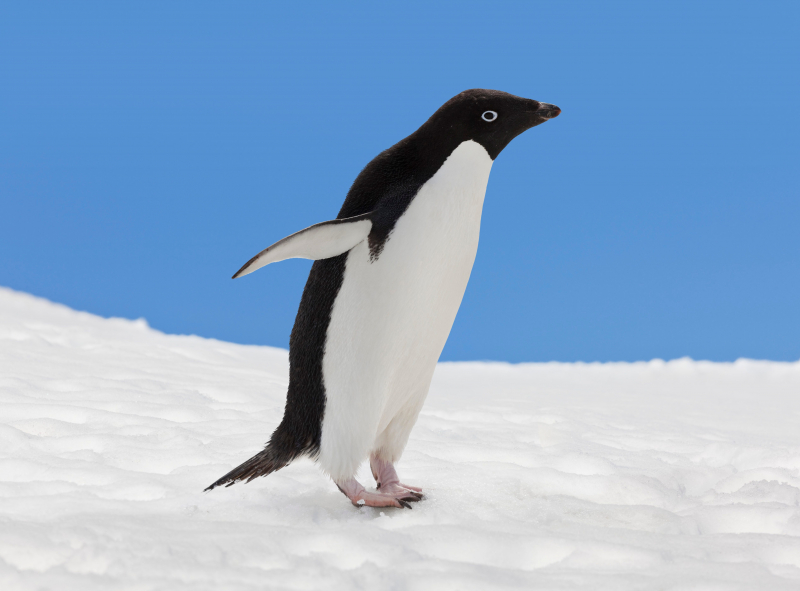
Reader's Digest https://www.youtube.com/watch?v=hRzRjHzvOts -
Plants, insects, and food drops are plentiful throughout the summer, providing plenty of food for birds. In truth, birds congregate in areas where they may locate the best food sources for themselves and their young. However, when winter comes, these food supplies tend to dwindle, making survival harder. Birds move to warmer climates to avoid famine. Winter's snow and ice, in addition to the frigid temperatures, make it difficult for birds to find safe nesting sites. Staying puts their health at danger and exposes them to predation. Thus, birds traveling south for the winter not only assist them obtain food, but they also provide refuge in a safer and more suited ecology.
We've previously discussed how birds fly throughout the winter to avoid famine. But, before they even reach the south, they will face a variety of natural and man-made challenges. Predators, tiredness, sickness, and catastrophes are all examples of natural risks. On a more serious note, man-made dangers to bird migration are exceedingly deadly. The loss of habitat caused by development and pollution has a huge detrimental influence on their ecology. And will their arduous journey come to an end when they reach the south? Definitely not. Migratory birds' survival during and after flight is impacted by reduced shelters and food supplies.
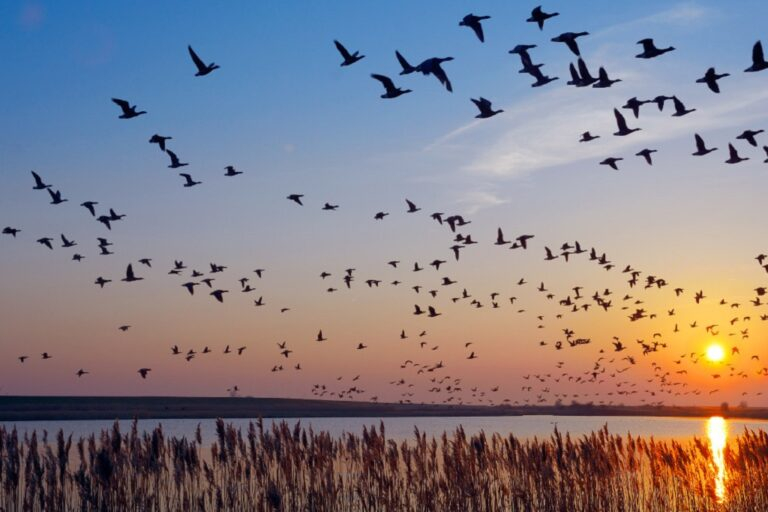
theprodigious.com https://www.youtube.com/watch?v=9COPv9C16bI -
Various bird species use their beaks in different ways to accomplish comparable tasks. A beak's key functions include feeding, cleaning feathers, nest building, defense, temperature regulation, and supplying food for chicks - all of which are essential for all avians. You've probably observed that no two bird species have the same beak. This is due to the fact that each bird's beak has developed to fit its hunting and eating habits. Birds utilize their particularly specialized beak to hunt food, pry seeds from their shells, and sip nectar from flowers.
Another essential behavior for all birds is preening (using the beak to remove bugs, loose feathers, dirt, and other debris). It keeps their feathers in excellent condition for flight. Without preening, the bird's plumage becomes greasy, matted, and mite-infested. Birds use their beaks to create nests as well. Many species gather nesting materials and transport them to their selected nesting place in their bill. Furthermore, birds will use their beaks to arrange materials and form the nest throughout building.
Birds use their beaks to feed their offspring in the same way as they do foraging and eating. The distinctive bill of each species enables them to effectively catch food to bring back to the nest. The bug, seed, fruit, or meat strip is retained in the beak before being delivered to the chick. The beak of a bird is a built-in protective mechanism. When a bird is threatened by a predator or wants to frighten a rival, it will peck, stab, or bite the intruder with its beak.
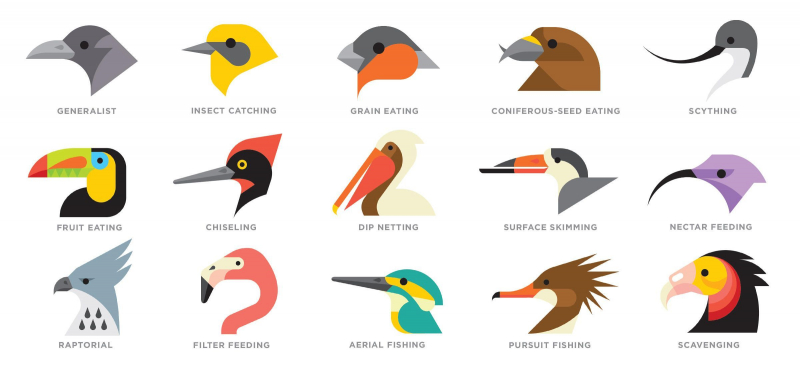
Pinterest https://www.youtube.com/watch?v=MFXKoKOLyRU -
Each year, migratory birds must engage in three energetically demanding activities: breeding, migrating, and molting. Molt is an important process that is not as glamorous (and hence not as widely researched) as breeding or migration. For most birds, each feather must be replaced at least once a year. Let's face it, feathers are quite crucial if you're a bird – it's difficult to migrate with bad feathers, and it's difficult to attract mates if your feathers are dirty and drab.
It's no surprise that most birds split these three expensive actions; normally, attempting to weight lift while running a marathon is a terrible idea. For most songbirds, this entails breeding, then returning to the breeding grounds for a few weeks to molt before travelling south, and sometimes freshening up with a few new feathers before returning north to breed. Feathers cannot grow any farther and may get worn, damaged, or faded over time due to regular wear and tear. Molting replaces these damaged feathers and also makes males more appealing to females, which is why many molts occur during the mating season.
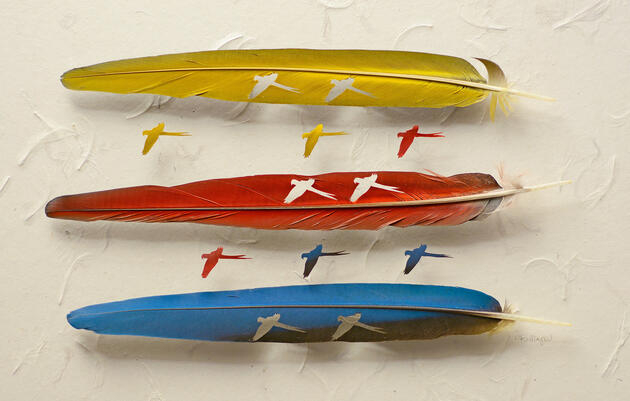
National Audubon Society| https://www.youtube.com/watch?v=aZ_pdDaND-0 -
Birds do not perceive in the same way as mammals do, thus a reflection in a window may appear to be another bird. Most daytime birds have eyes on either side of their heads, giving them a large field of view but minimal depth awareness. Glass windows are worse than invisible to birds. They appear to be tempting locations to fly into by reflecting greenery or the sky. Because of the sheer quantity of windows, the toll on birds is enormous. According to a 2014 research, window strikes kill up to 1 billion birds in the United States each year.
Awnings and window screens, as well as other approaches, are occasionally used to reduce reflections and prevent birds from colliding with residences or commercial buildings. Although a bird can crash into glass at any time, the act becomes less often as breeding season approaches. What happens when birds fly into windows? Unfortunately, even when the bird is just momentarily stunned and gets to fly away, it typically dies. These birds frequently die later from internal bleeding or bruises, particularly on the head. Muhlenberg College's Daniel Klem has been researching this topic since the 1970s.
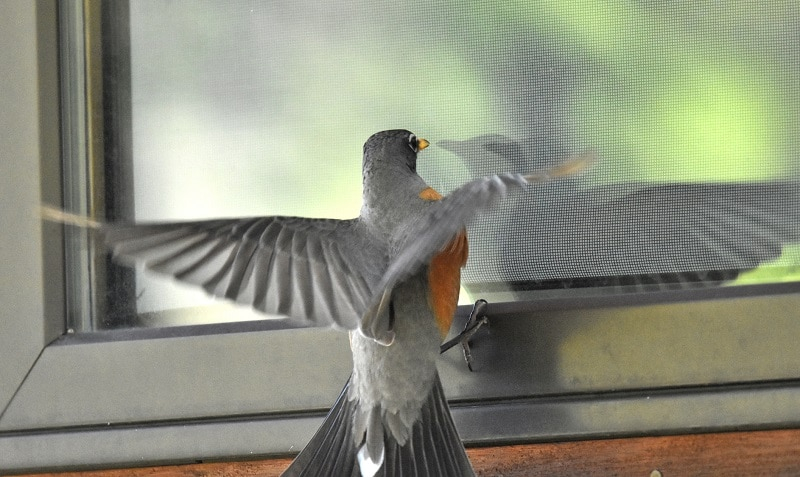
33rdsquare.com https://www.youtube.com/watch?v=ZBuLIf-o1AU -
In the wild, birds eat insects, worms, grubs, nectar, and seeds. Some birds eat berries, nuts, fruits, pollen, and even grasses, whilst others eat snakes, rodents, small animals, and even small birds. There are also many bird species, such as garden birds, ducks, migratory birds, and others, and each of them consumes a distinct natural diet.
Beach birds, like seagulls, consume shellfish as well, but they are also scavengers, eating food that people have dumped. Ducks and geese, for example, float on the water, dipping or diving to munch on vegetation in seas, lakes, and rivers. Others, like raptors, swoop down from the skies to grab and consume small animals like mice or rabbits. Large predatory birds, such as eagles and hawks, hunt on each other as well. Many birds, including crows, jays, and magpies, devour other birds' eggs and young. Individual bird species eat foods native to their area, but they have also evolved morphological traits that aid in food gathering. Specific birds have adapted to feasting on plants as well, including algae, lichen, grass, seeds of all kinds, and much else.
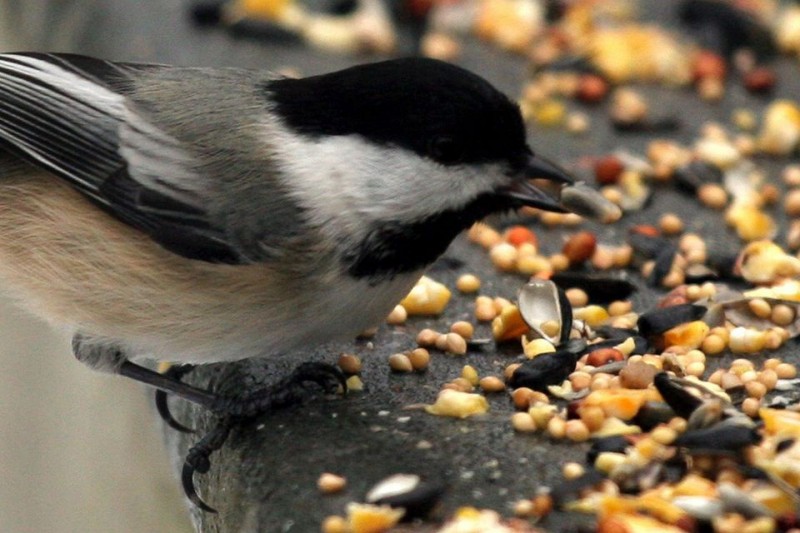
The Spruce https://www.youtube.com/watch?v=xEbRZs1L59E -
Raptors, often known as birds of prey, are birds that primarily hunt and eat on huge animals in contrast to the hunter. They also have good eyesight for locating food from a distance or while flying, powerful feet with talons for capturing or killing prey, and sharp, curved beaks for shredding flesh. Raptor is derived from the Latin word rapio, which means to forcefully seize or take. Carrion is consumed by many birds, including fish eagles, vultures, and condors, in addition to live prey.
While the term "bird of prey" might potentially refer to any bird that predominantly feeds on animals, ornithologists often use the more precise definition described in this article. Birds of prey not covered by the ornithological description include storks, herons, gulls, phorusrhacids, skuas, penguins, kookaburras, and shrikes, as well as numerous insectivorous songbirds. Some ancient predatory birds, such as mousebird cousins (Sandcoleidae), Messelasturidae, and some Enantiornithes, possessed talons that resembled those of present birds of prey, suggesting that they may have shared similar behaviors.
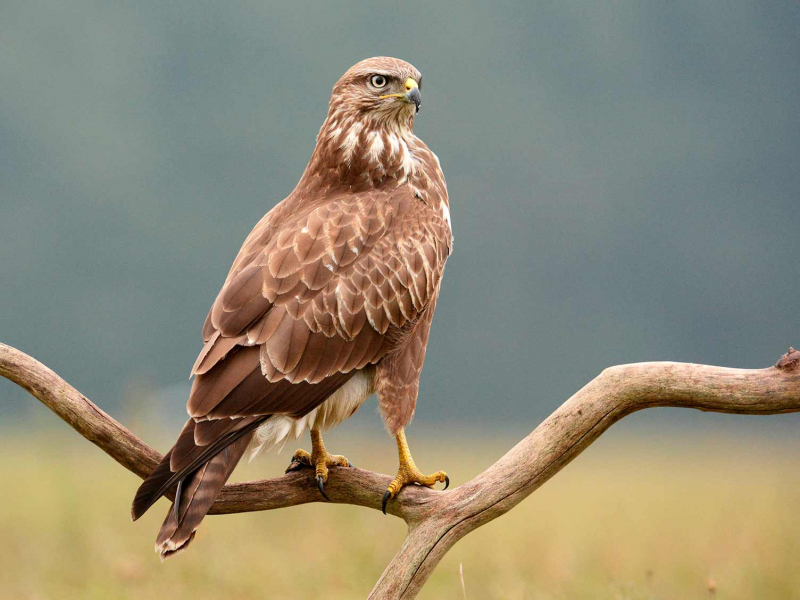
bird-ok.blogspot.com https://www.youtube.com/watch?v=Th-bO1hTmvc -
The common name for several huge birds of prey in the Accipitridae family is eagle. Eagles are classified into various genera, some of which are closely related. The majority of the 68 eagle species are found in Eurasia and Africa. Eagles are not a natural group, but rather any type of bird of prey large enough to hunt huge (50 cm long or more overall) animals. The eyes of eagles are highly strong. The martial eagle, whose eyes are more than twice the size of the human eye, is said to have visual acuity up to eight times that of humans. This sharp vision allows eagles to see possible prey from a great distance.
This sharp vision is due mostly to their exceptionally big pupils, which guarantee little diffraction (scattering) of incoming light. All known species of eagles have a bigger female than a male. The phrase "eagle eyes" comes from the golden eagle, which has amazing vision and can notice a rabbit or mouse from 2 miles (3.2 kilometers) away. For comparison, a person could not see the same rabbit from a quarter-mile (0.40 kilometers) away. An eagle's eyes are developed for clear vision in daylight, from early morning light to early evening light. The pupil of an eagle's eye is too small to see at night. The bony ridge above an eagle's eyes helps protect them from sunlight and assist in effective hunting.
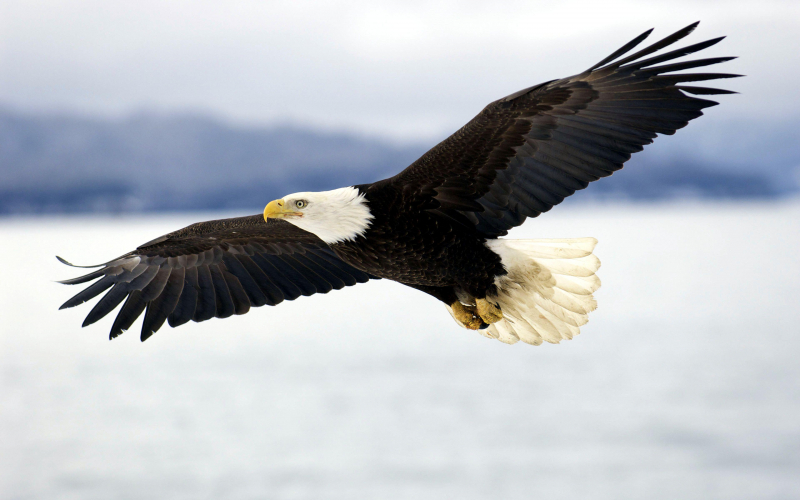
pgcpsmess.wordpress.com https://www.youtube.com/watch?v=PpjOvTWmZpA -
Even though we frequently witness peacocks running and playing in their surroundings, these species have sly behavior. The display of a peacock's feathers is breathtaking. Every year, many visitors pay a significant amount of money to visit locations where they may see a peacock exhibiting its tail feathers. According to research on these critters, peafowls (both peacock and peahen) exhibit their feathers all year. But they do it frequently, especially during mating season. These birds exposing their tail feathers with a train is an uncommon sight for us humans. The sight, splendour, and dazzling eyespots on these peacock birds' plumage are something to die for!
Aside from scientific observations, a peacock spreading its tail feathers is a symbol of pride and dignity in many cultures throughout the world. According to Greek mythology, the peacock bird is also a patron of the goddess Hera. According Greek legend, Hera fixed her gaze on the plumes of the peacock bird, indicating the arrival of knowledge from heaven. The repeated occurrence of peacocks in legendary beliefs across the world has increased the significance of this gorgeous bird's simple spreading of tail feathers. This extraordinary sight attracts the female peahen, and it may encourage her to breed with him. These decorative feathers are also called display feathers, because the male “displays” them as part of its mating ritual.
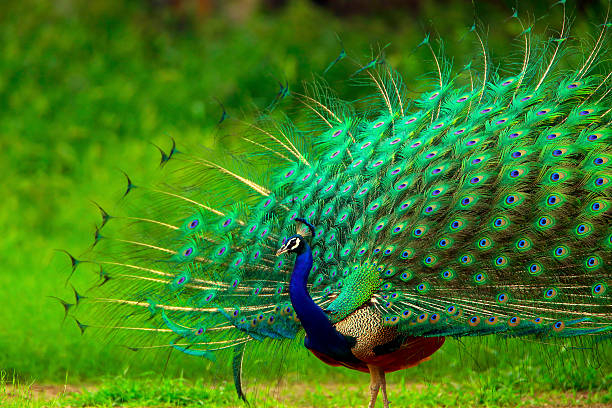
istockphoto https://www.youtube.com/watch?v=TTwT1-TpFhE -
Hummingbirds can soar at breakneck speeds. These incredible birds can attain speeds of up to 30 miles per hour on a daily basis. As if that weren't enough, during their courting displays, they can reach nearly quadruple that speed. The speed at which hummingbirds fly varies depending on the species. However, the fastest hummingbirds have been seen to reach speeds of up to 90 feet per second. That is more over 60 miles per hour! Researchers at UC Berkeley measured these incredible statistics while monitoring male Anna's hummingbird courting dives. This was the fastest speed ever recorded for an invertebrate in relation to its size. The acceleration and deceleration during these dives are likewise incredible. The birds are subjected to g-forces that would cause the ordinary person to pass out!
They are superb air acrobats due of their small weight (approximately one-tenth of an ounce). They can fly in any direction, including upside down, at speeds of up to 60 miles (96.5 kilometers) per hour. A hummingbird consumes every 15 to 20 minutes to maintain its energy level and may visit up to 1,000 blooms each day.
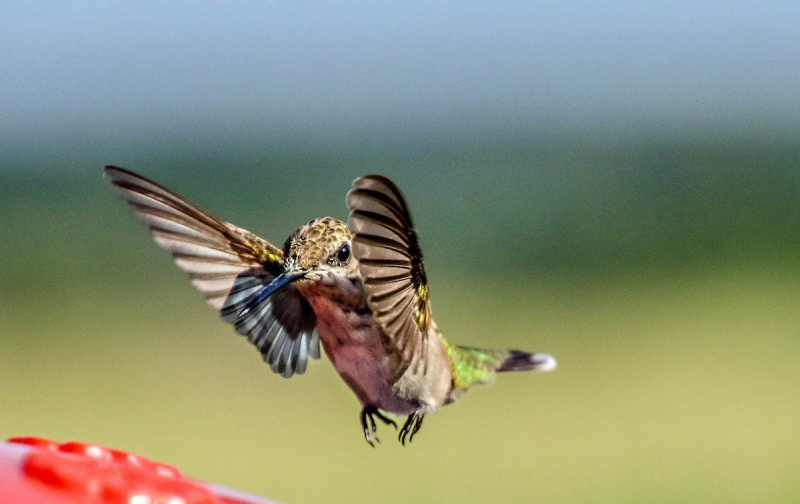
birdsandblooms.com https://www.youtube.com/watch?v=_u5lgo8kAgQ -
Birds, on the other hand, are not mammals. Birds are classified as a separate class of vertebrate creatures known as Aves. Mammals, on the other hand, are classified as Mammalia and are distinguished by the production of milk for their young, four-chambered hearts, fur or hair covering the majority of their body, and warm-blooded bodies. Birds have feathers and beaks, and they lay eggs, indicating that they are not mammals. Furthermore, there are some significant physical distinctions between birds and mammals. Birds, for example, have hollow bones filled with air sacs, making them lighter than most mammals; birds also lack sweat glands, nipples, and mammary glands, and have a four-chambered stomach to digest their food.
In terms of reproduction, the two types of animals differ as well; birds lay eggs, whilst mammals give birth to live young. Finally, birds have wings that allow them to fly, but most mammals are unable to do so. All of these distinctions demonstrate that birds and mammals are two different groups that are not linked.
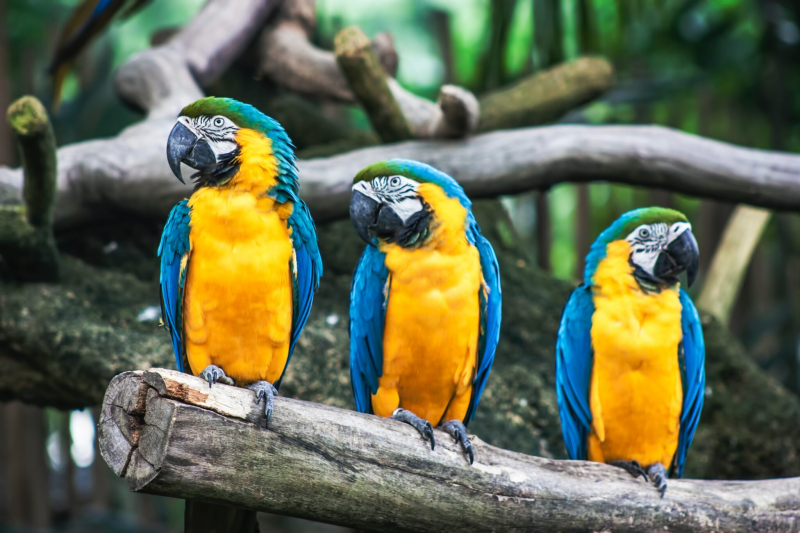
pinterest https://www.youtube.com/watch?v=BUkoj743MSA -
Birds can definitely smell! Although most birds' nares are not visible when observing them from a distance, if you come up close to their beak, you can see them. Nares are essentially bird nostrils, and they utilize them to breathe and smell as well as take in air.
Most birds can smell now, although not all birds smell well. Much is still unknown about different kinds of birds and their capacity to smell, because it was formerly thought that birds couldn't smell at all. However, now that we have evidence that suggest contrary, the serious research is only getting started. Traditionally, scientists believed that birds could not smell. Many experiments have been made in a bid to solve this riddle, and the only conclusive answer we have is that some birds have a greater need of their sense of smell than others.
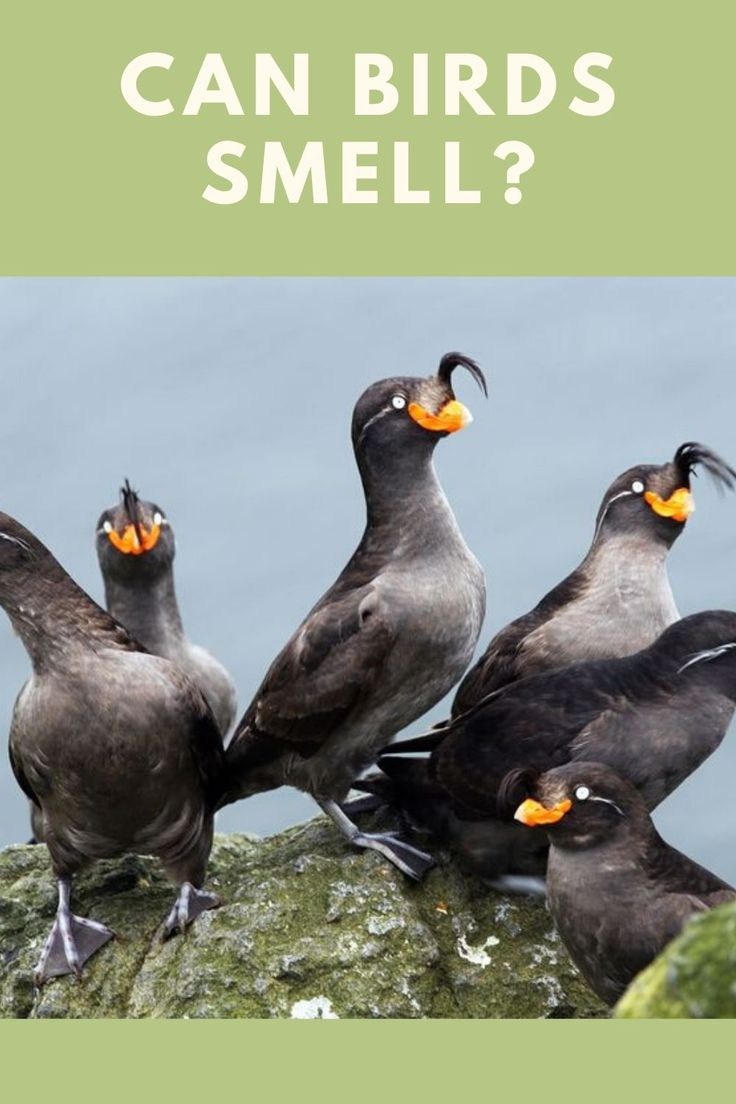
Pinterest https://www.youtube.com/watch?v=rTlG1d2XRZM -
Birds are among the world's most intriguing and diversified species. Despite this, they all share a few characteristics, such as the exterior feathers and the wings. This question has a simple answer: yes. Birds have ears and a complete auditory sensory system, which allows them to hear things. However, in terms of processes and architecture, birds' ears differ significantly from ours, particularly in terms of external ear form.
Birds, like reptiles and amphibians, have ear openings on the rear of the skull, slightly below the line of sight. These ear openings are frequently as large as the bird's eyes, although they're generally covered with feathers known as "auricular feathers". These feathers are delicate enough not to interfere with the incoming waves that reach the external bird ear, yet substantial enough to cover the ear opening from dust and moisture.
According to a 2014 study, the two ears of certain birds are not on the same level, which gives the birds an edge when it comes to localization when flying. Since these ear holes are usually quite small and hidden under feathers, birds usually look like they don’t have any ears.
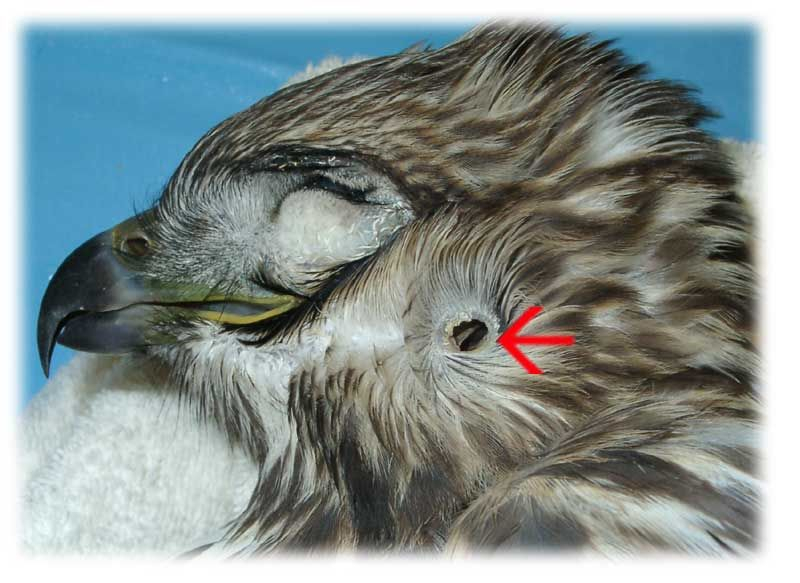
Pinterest https://www.youtube.com/watch?v=dzLmmRcjbcU -
One of the many remarkable characteristics of birds is their sleep cycle. Yes, birds sleep, but not in the same way that mammals do. The cycles of Non-rapid Eye Movement sleep and Rapid Eye Movement sleep are shared by birds and mammals, although there are distinctions. The primary distinction is that both cycles are shorter; non-rapid eye movement sleep lasts around two and a half minutes, whereas rapid eye movement sleep lasts approximately nine seconds.
Birds sleep with one-half of their brain awake as well! It's known as unihemispheric slow-wave sleep, and it keeps birds vigilant to prospective predators while yet allowing them to sleep. Other creatures sleep in similar manner, but only birds can manage it. A sleeping bird may vary how much of its brain is asleep by adjusting the width of its eye. Another distinction in a bird's sleep cycle is that it does not lose much muscular tone when sleeping. It makes no difference whether the bird stands, perches, roosts, lies down on the ground, swims, or hangs upside down.
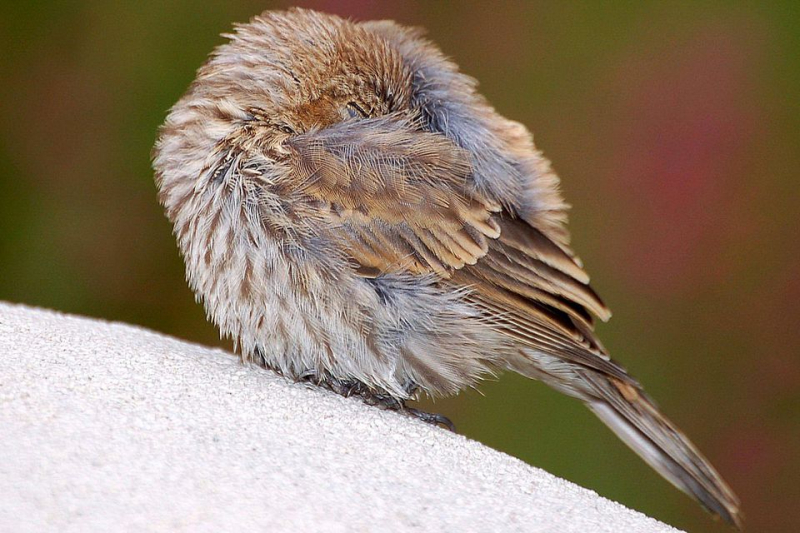
The Spruce https://www.youtube.com/watch?v=QWNl8VJNum0

















